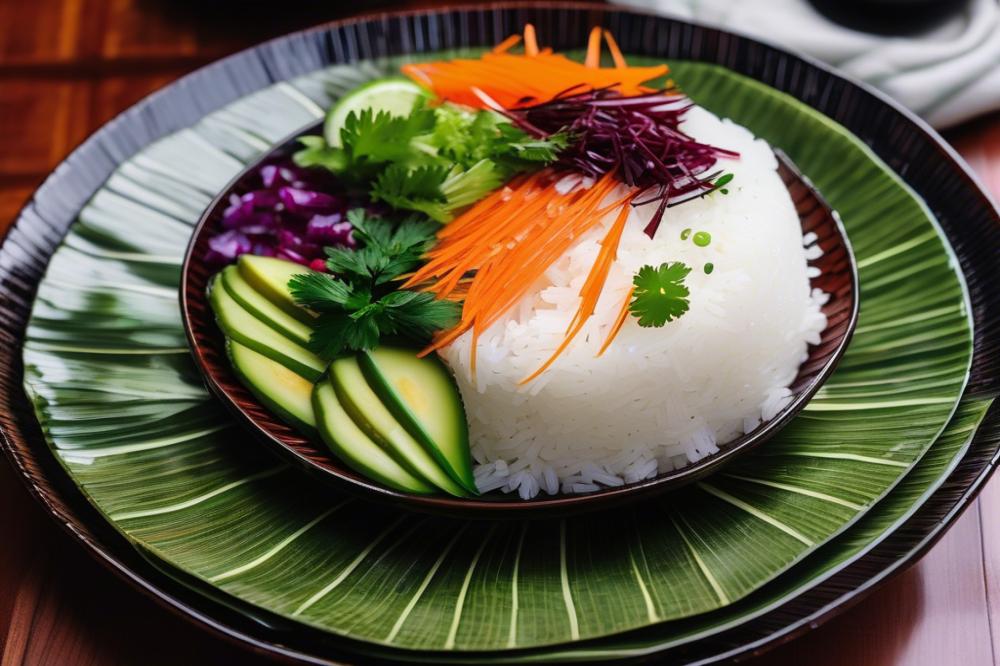Importance of Xôi Mặn in Vietnamese cuisine
Vietnamese Sticky Rice holds a special place in the heart of Vietnamese cuisine. Xôi Mặn is not just a simple meal; it’s a traditional dish that often graces festive occasions and family gatherings. This hearty food brings people together, symbolizing love and community. Families prepare it during celebrations, making it a significant part of their culinary heritage.
Festivals and significant life events often feature this dish. Various recipes highlight the joy of cooking and sharing food with loved ones. The layering of flavors showcases the rich culinary traditions tied to different regions of Vietnam. Merging glutinous rice with an array of savory toppings creates a colorful and satisfying experience.
Furthermore, Xôi Mặn thrives in the realm of street food. Vendors across crowded markets serve this dish for breakfast or a quick snack. They offer the unique experience of enjoying homemade flavors while on the go. Each bite reveals layers of taste that represent the true essence of everyday Vietnamese flavors. Glutinous rice, paired with well-prepared toppings, showcases the everyday culinary practices found throughout the country.
In conclusion, Xôi Mặn reflects both festive spirit and the everyday life of Vietnamese people. It’s a dish that binds cultural significance with the vibrancy of street food. Through Xôi Mặn, the charm of Vietnamese Sticky Rice unfolds in every savory encounter.
Understanding Xôi Mặn
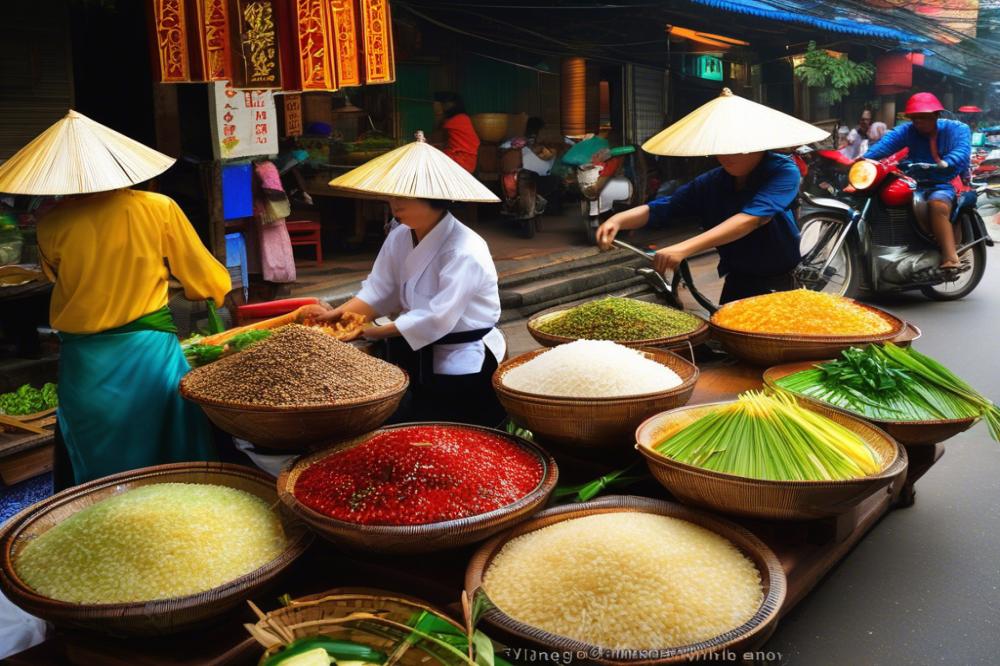
Xôi Mặn is a delightful Vietnamese dish that highlights the use of glutinous rice as its main ingredient. This sticky rice is a staple in many Asian cuisines, prized for its chewy texture and ability to absorb flavors. While often served plain, the magic of Xôi Mặn lies in its savory toppings, which elevate the dish to new heights.
Originating within the heart of Vietnamese cuisine, this dish has deep roots in the traditions and celebrations of the culture. Historically, Xôi Mặn is associated with festive food, enjoyed during special occasions and family gatherings. Over time, its presence has expanded, becoming a common feature in everyday meals as well as festive recipes.
Street food vendors frequently offer this delectable rice dish to hungry passersby. Its popularity has surged, and it’s not uncommon to see lines of eager customers waiting to enjoy a warm serving. Xôi Mặn provides an array of flavors, thanks to the various toppings that can be added, such as pork, mushrooms, or mung beans. Each topping brings its own character to the dish, making every serving a delicious experience.
People appreciate its versatility, whether eaten as a quick snack or part of a larger meal. Many households proudly include Xôi Mặn in their repertoire of rice dishes, celebrating its heritage while also enjoying its modern interpretations. This traditional dish is more than just food; it’s a connection to Vietnamese culture and a reflection of communal dining.
Ingredients and Cooking Instructions
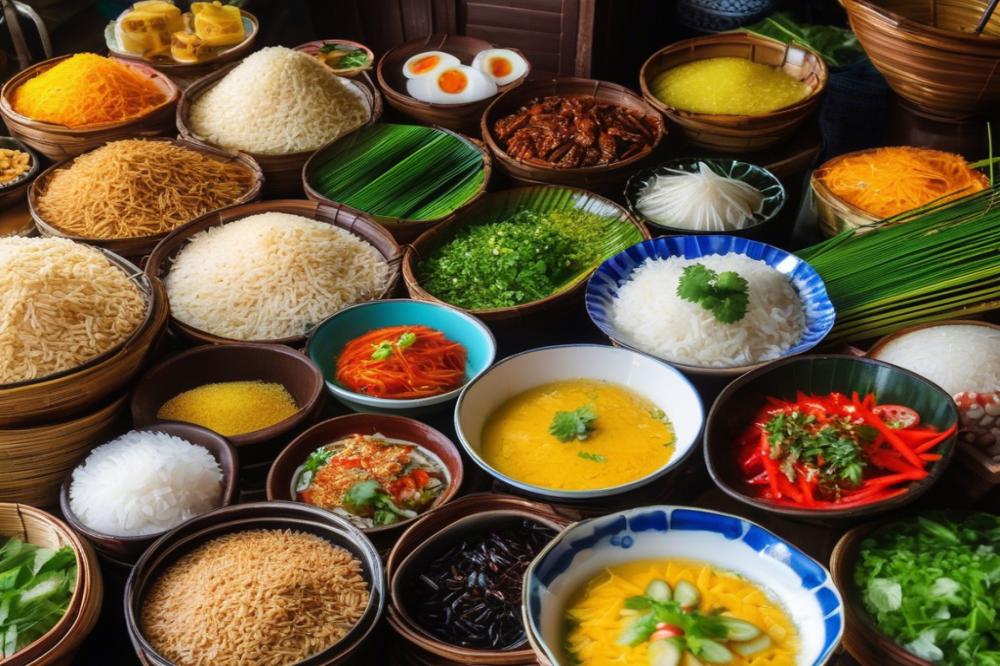
To make a delightful dish of Xôi Mặn, you’ll need the following ingredients:
- Glutinous rice – 2 cups
- Green mung beans – 1 cup
- Dried shrimp – 100 grams
- Ground pork – 150 grams
- Sofitel mushroom – 50 grams
- Onion – 1 large, chopped
- Fish sauce – 2 tablespoons
- Coconut milk – 1/2 cup
- Salt – 1 teaspoon
- Pepper – 1/2 teaspoon
- Fresh herbs for garnish (optional)
Cooking Instructions:
Begin by soaking the glutinous rice and mung beans in water overnight. This step is crucial for achieving the right texture when cooking. The next day, steam the soaked rice along with coconut milk and salt. The moisture from the coconut milk adds a rich flavor to the rice.
Next, prepare the savory filling. Start by heating a pan and adding the chopped onions. Sauté them until they become translucent. Follow this with the dried shrimp, ground pork, and Sofitel mushrooms. Season this mixture with fish sauce, salt, and pepper to enhance the flavors. Cook until the meat is no longer pink, and everything is well combined.
Combine the steamed glutinous rice with the savory filling in a large mixing bowl. Mix carefully to ensure an even distribution of the ingredients. Afterward, steam this mixture again for an additional 30 minutes. This will meld the distinct flavors together perfectly.
Once cooked, serve warm. Garnish with fresh herbs if you desire. This traditional dish is a favorite in Vietnamese cuisine. It can be enjoyed as street food, festive food, or as a comforting meal at home. The combination of textures and flavors creates an enjoyable experience for everyone at the table.
Nutritional Information
Here is the nutritional information for each ingredient used:
- Glutinous rice (2 cups): Approximately 300 calories
- Green mung beans (1 cup): About 230 calories
- Dried shrimp (100 grams): Roughly 300 calories
- Ground pork (150 grams): Around 360 calories
- Sofitel mushroom (50 grams): Approximately 15 calories
- Onion (1 large): About 50 calories
- Fish sauce (2 tablespoons): Roughly 20 calories
- Coconut milk (1/2 cup): Around 200 calories
- Salt (1 teaspoon): 0 calories
- Pepper (1/2 teaspoon): 3 calories
- Fresh herbs (optional): Approximately 5 calories
Savory Toppings for Xôi Mặn
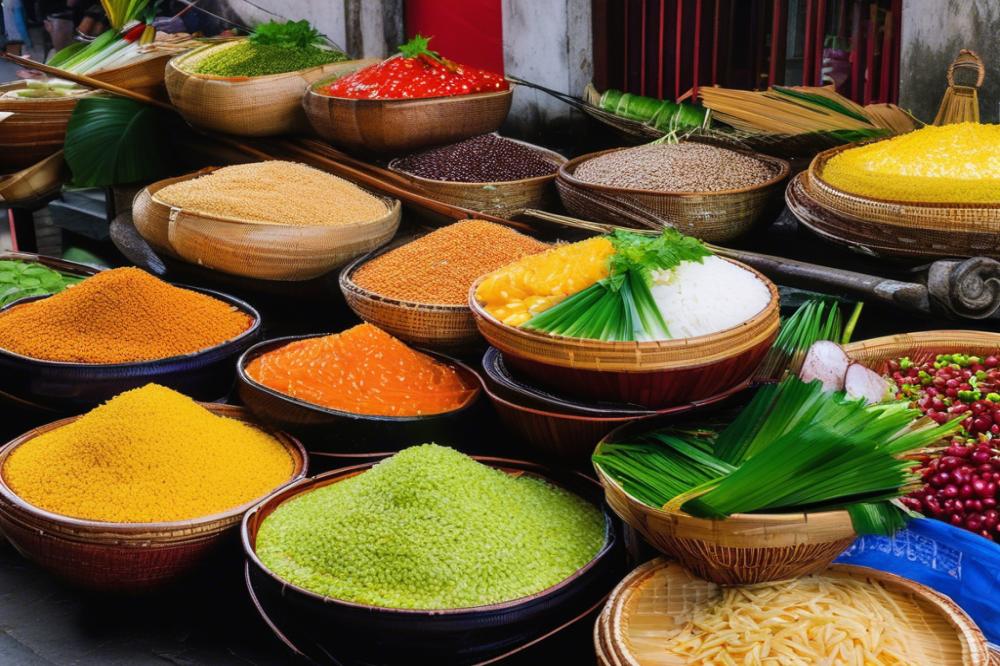
Savory toppings are essential for enhancing the overall experience of Xôi Mặn. They make this traditional dish much more exciting and delicious. With glutinous rice as the base, each topping adds its own unique flavor and texture. Many people enjoy this as street food, finding comfort in its rich offerings.
Fried shallots are among the most popular toppings. Their crispy texture contrasts beautifully with the sticky rice. The sweetness of these shallots complements other ingredients perfectly. Another favorite is salted eggs. Their creamy yolks provide a rich taste, adding depth to each bite.
Pickled vegetables are also common. These ingredients bring a tangy punch that balances the dish’s richness. Various kinds, such as pickled daikon or carrots, are often used. Fresh herbs like cilantro or scallions can be sprinkled on top. These not only provide color but also a burst of freshness with each mouthful. The combination of toppings creates layers of flavor.
Various recipes exist, each showcasing different toppings. Some may include minced pork or chicken, adding protein and heartiness. Others might feature mushrooms, presenting a vegetarian option full of umami. Each variation reflects the diversity found in Vietnamese cuisine.
Many families serve Xôi Mặn during festive occasions. It serves as a reminder of cultural heritage and joyful celebrations. Enjoying this dish with a variety of toppings can elevate any meal. These rice dishes hold a special place in the hearts of many, not just as food, but as a symbol of togetherness.
Culinary and Cultural Significance
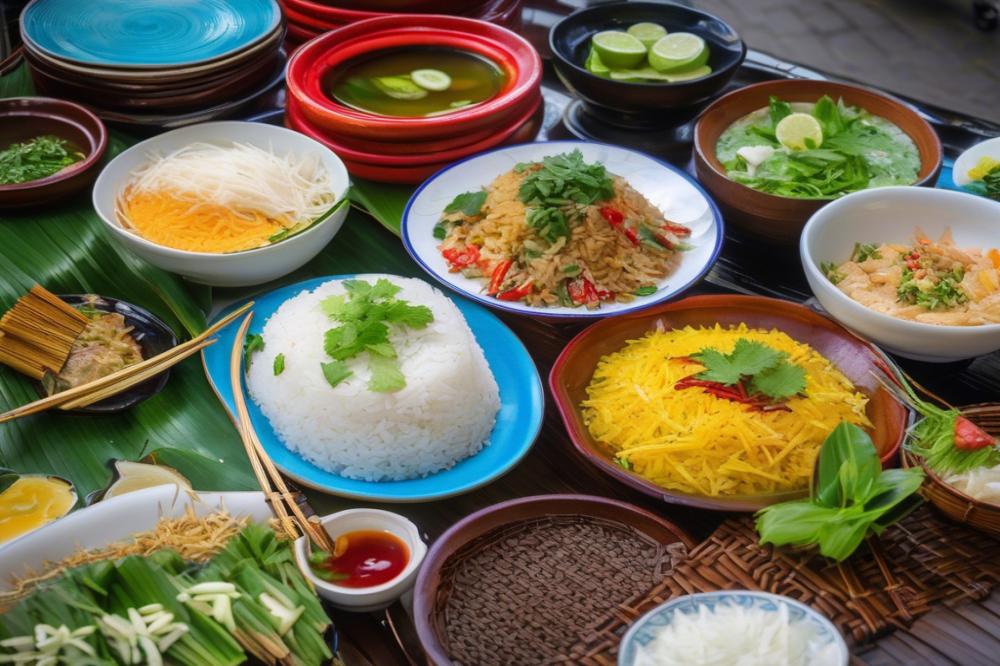
The role of Xôi Mặn is deeply rooted in Vietnamese culture. Families enjoy this traditional dish during special occasions. Recipes for this savory meal can vary widely from region to region. Some prefer it with shrimp, while others love it topped with pork or chicken. Each version reflects local tastes and traditions.
Festivals bring the community together, and Xôi Mặn is a popular choice for festive food. During Tet, the Lunar New Year celebration, glutinous rice symbolizes prosperity and good luck. Friends and relatives gather to share delicious meals that include this dish. It fosters a sense of belonging and togetherness.
Many street food vendors offer Xôi Mặn, showcasing its everyday appeal. A quick stop for a bowl is common for locals. The vibrant flavors are not just satisfying but also a taste of home. This dish represents the essence of Vietnamese cuisine. Its savory toppings highlight the diversity of Asian cuisine.
Different toppings elevate the experience of each bite. From crispy fried shallots to fragrant herbs, every addition enhances the dish. This makes each serving feel personalized. Such variety underscores the creativity found in rice dishes across Asia.
Sharing Xôi Mặn during family gatherings creates lasting memories. The aroma wafts through homes, drawing people in. Children often look forward to these meals just as much as adults do. This dish brings joy and a sense of stability.
Ultimately, Xôi Mặn is not just food; it’s a cultural symbol. It embodies Vietnamese values of family, community, and tradition. Through this simple yet flavorful dish, people experience the richness of their heritage. Understanding its significance deepens appreciation for the diverse flavors that make up Asian cuisine.
Tips for Perfecting Xôi Mặn
To achieve the best texture and flavor in this traditional dish, start with high-quality glutinous rice. Rinsing the rice several times will remove excess starch. After washing, soak the rice for at least four hours or overnight. This helps soften the grains and promotes easier cooking. Steaming is a preferred method as it yields a sticky and chewy texture.
Pay attention to cooking time. Under-cooking rice results in hard grains, while overcooking can lead to a mushy consistency. Using bamboo steamers can enhance the steaming process, giving the rice a gentler heat. Also, adding a pinch of salt to the rice enhances its flavor without overpowering. Incorporating coconut milk is another way to elevate the tasty experience.
Avoid common mistakes like not allowing the rice to steam long enough. This can lead to disappointment when the rice isn’t fluffy or sticky enough. Failing to use sufficient water in the steaming process is another problem. Always check the water level; there should be enough steam to cook the rice properly. If the rice is clumpy after cooking, a gentle fluff with a fork can help separate the grains.
Customization and Variations
When it comes to savory toppings, the options are endless. Ground meat, dried shrimp, or mushrooms can enhance dishes and cater to different tastes. For those looking to make their creation unique, try mixing in herbs or spices. Fresh cilantro or chopped green onions can give it a fresh twist. Spicy dipping sauces can also add an unexpected kick.
Thinking outside the box? Consider using different protein sources. Tofu can work well for a vegetarian version, while eggs add richness. Street food vendors often experiment with toppings, so feel free to get creative. Seasonal vegetables can also add color while boosting flavor. You might try roasted peanuts, sesame seeds, or crispy shallots for added texture and crunch.
This dish is not just for festive occasions. With variations available, serve Xôi Mặn on any day. Experiment with different cooks and combinations as you find what suits your preferences. Vietnamese cuisine is all about balancing flavors, so trust your palate. Try blending sweet and savory notes to discover new favorites in this delightful rice dish.
Celebrating Xôi Mặn in Vietnamese Culture
In the vibrant tapestry of Vietnamese cuisine, Xôi Mặn holds a special place. This favorite dish showcases the country’s appreciation for flavors, textures, and tradition. Often enjoyed during family gatherings or festive occasions, it symbolizes togetherness. People can gather around steaming bowls of this sticky rice, enticing everyone to share stories and laughter. Making Xôi Mặn is not just about food; it’s an experience that invites nurturing connections.
Trying your hand at preparing this dish can be quite rewarding. Home cooks can experiment with different savory toppings, adding personal touches. Not only will it expand your culinary skills, but it also offers a chance to connect with loved ones. By preparing Xôi Mặn, you can bring a slice of Vietnamese culture to your kitchen. Gathering friends for a cooking session could lead to delightful memories and shared enjoyment.
This traditional dish remains beloved among many. Its enduring appeal crosses borders, touching hearts far beyond Vietnam. Each bite reflects the rich flavors and history embedded in the rice and toppings. By sharing Xôi Mặn with others, you can foster appreciation for diverse culinary practices. Ultimately, this dish stands as a testament to the beauty of food as a universal language, bridging cultures everywhere.

